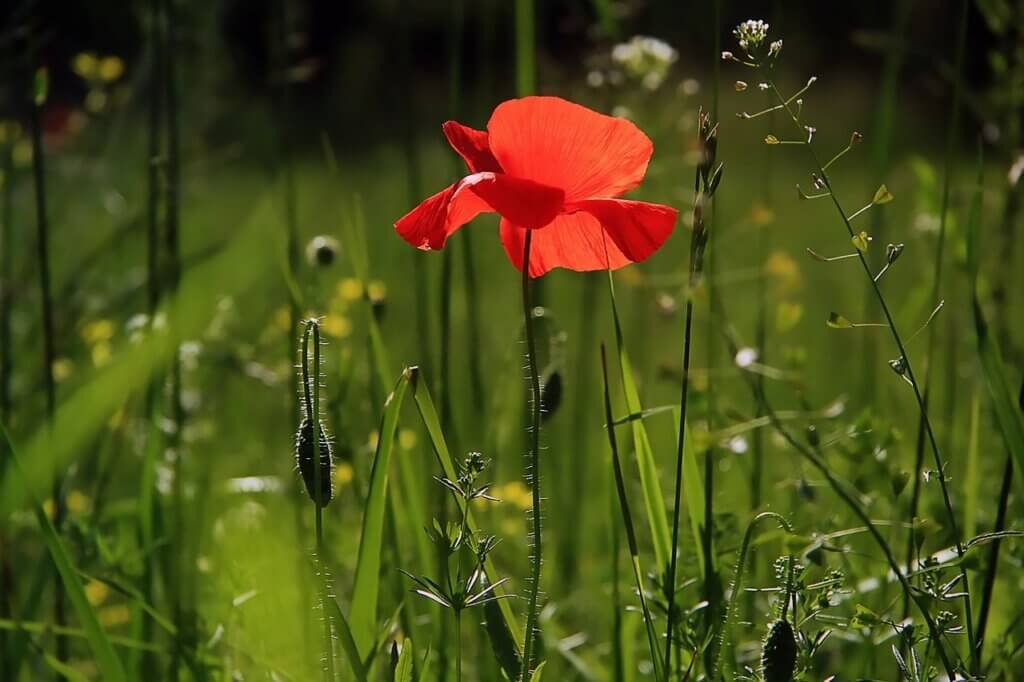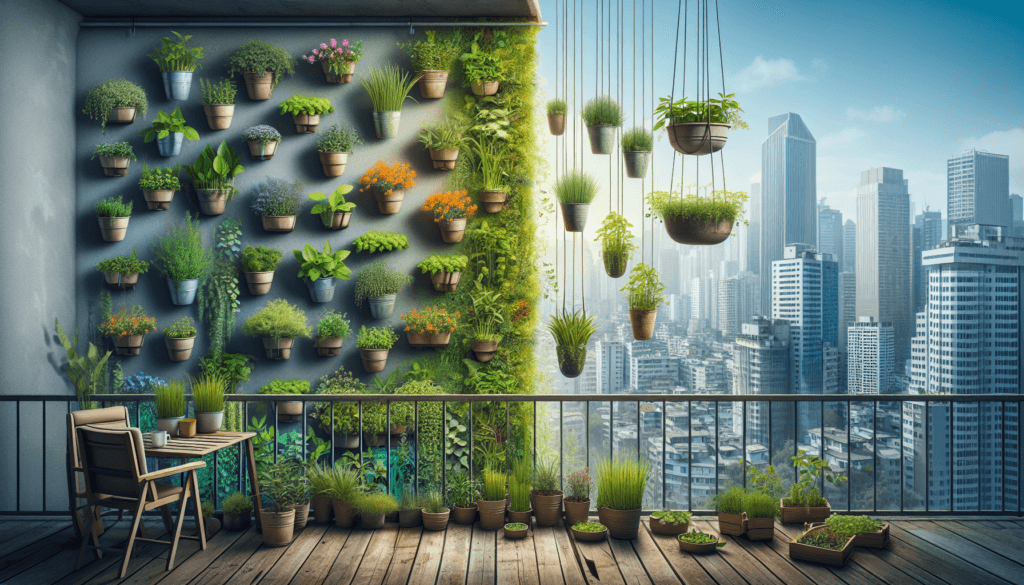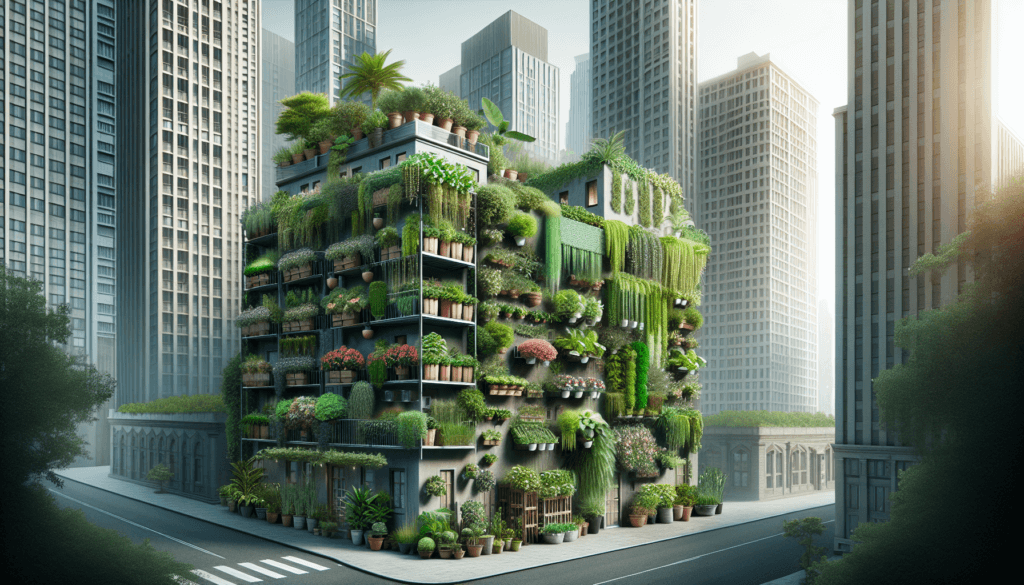Are you passionate about gardening but limited by a small living space? Look no further! In this article, we will provide you with valuable urban gardening tips to help you optimize the organization of your small space. Discover creative solutions to maximize your gardening area, whether it be in a tiny apartment, a compact balcony, or a snug backyard. With these tips, you can transform any small area into a flourishing urban oasis. So, roll up your sleeves and get ready to embark on a gardening adventure like no other!
Container Selection
Choosing the Right Containers
When it comes to urban gardening in limited spaces, choosing the right containers is crucial. Opt for containers that are not only aesthetically pleasing but also functional and practical. Consider the material of the containers, such as ceramic, plastic, or metal, and select one that suits your style and climate. Additionally, ensure that the containers have drainage holes to prevent waterlogging and promote healthy root growth.
Evaluating the Size and Depth
The size and depth of the containers are essential factors to consider when selecting them for your urban garden. The depth of the containers should be adequate to accommodate the roots of your chosen plants. This will provide them with enough space to grow and thrive. Furthermore, consider the size of the containers in relation to the available space in your urban garden. Opt for containers that fit well in the designated area without overcrowding or obstructing the growth of other plants.
Considering Drainage Options
Proper drainage is crucial for the overall health and success of your urban garden. When selecting containers, pay attention to the drainage options they offer. Ideally, containers should have drainage holes to allow excess water to escape, preventing the roots from becoming waterlogged. Alternatively, you can choose self-watering containers that have built-in reservoirs to provide consistent moisture. Proper drainage will prevent water-related issues, such as root rot, and promote optimal growing conditions for your plants.
Vertical Gardening Solutions
Installing Vertical Planters
Vertical gardening is an excellent solution for maximizing your urban garden space. Installing vertical planters allows you to grow plants upwards, utilizing available vertical surfaces such as walls or fences. Vertical planters come in various sizes and designs, making it easy to find one that suits your needs and style. These planters provide not only a functional solution but also an aesthetically pleasing addition to your urban garden.
Using Hanging Baskets
Hanging baskets are a popular choice for urban gardeners as they can be hung from railings, walls, or overhead structures, making efficient use of space. They allow you to grow a variety of plants, from colorful flowers to herbs and trailing vines. Hanging baskets come in different sizes and shapes, allowing you to create visually appealing displays while maximizing your available space.
Utilizing Wall-mounted Systems
Another vertical gardening solution is to utilize wall-mounted systems. These systems typically consist of modular panels or pockets that can be installed on walls or fences. They provide a flexible and customizable way to grow plants vertically. By utilizing wall-mounted systems, you can create a living wall, adding both beauty and functionality to your urban garden. These systems are perfect for growing herbs, lettuces, or even small flowering plants.

Optimizing Natural Light
Identifying Sunniest Spots
One of the challenges of urban gardening is often limited access to direct sunlight. However, by identifying the sunniest spots in your urban garden, you can make the most of the available natural light. Observe your garden throughout the day and determine where the sunlight is most abundant. Keep in mind that different areas may have varying levels of sunlight, so it’s essential to plan your plant placement accordingly.
Using Reflective Surfaces
To maximize natural light in your urban garden, consider using reflective surfaces strategically. By placing light-colored or reflective materials, such as mirrors or white walls, you can bounce sunlight onto shaded areas. This technique helps to increase the overall amount of natural light available to your plants, promoting their growth and optimizing photosynthesis.
Arranging Plants Based on Light Needs
Different plants have varying light requirements. Some thrive in bright, direct sunlight, while others prefer partial shade. To optimize natural light in your urban garden, arrange your plants based on their light needs. Place sun-loving plants in areas where they can receive the most direct sunlight, while shading-loving plants can be positioned in areas with partial shade or lower light conditions. By organizing your plants according to their light requirements, you can ensure that they receive the appropriate amount of sunlight for healthy growth.
Soil Selection and Management
Selecting Quality Potting Mix
The foundation for successful urban gardening starts with selecting the right potting mix. Unlike traditional in-ground gardening, container gardening requires a well-draining and nutrient-rich soil mix. Look for high-quality potting mixes that are specially formulated for container gardening. These mixes are designed to provide good drainage while retaining enough moisture for plant roots to thrive. Avoid using garden soil, which tends to become compacted in containers and can hinder root growth.
Amending Soil for Drainage and Nutrition
Even with quality potting mixes, it is often beneficial to amend the soil further to improve drainage and provide additional nutrients. Adding organic matter such as compost or aged manure can enhance soil structure and moisture retention while promoting beneficial microbial activity. Additionally, incorporating perlite or vermiculite into the soil mix can aid in improving drainage. By amending the soil, you create a more favorable growing environment for your plants, ensuring their health and vitality.
Practicing Proper Watering Techniques
Proper watering practices are essential for the overall success of your urban garden. When watering container plants, it’s crucial to provide enough water to thoroughly moisten the entire root ball while avoiding waterlogged conditions. Always check the moisture level by sticking your finger into the soil before watering. If the top inch feels dry, it’s time to water. Additionally, consider using a watering can with a narrow spout to direct water to the root zone and minimize water loss. Regularly monitoring and adjusting your watering practices will help ensure that your plants receive the optimal amount of hydration.

Choosing appropriate Plants
Picking Compact Varieties
In a small urban garden, selecting compact plant varieties is key. Look for plants that are naturally dwarf or have a bushy growth habit. Compact varieties take up less space while still providing a bountiful harvest or vibrant display. Consider vertical growth plants like cherry tomatoes or compact cucumbers, or even small ornamental shrubs that can thrive in containers. By choosing compact varieties, you can maximize your available space without compromising on plant diversity or productivity.
Considering Edible Options
If you’re interested in growing your own food in an urban garden, consider choosing edible plants. Herbs like basil, parsley, or mint can be easily grown in small pots and elevate your culinary creations. Additionally, compact vegetables such as lettuce, radishes, or peppers can be successfully grown in containers. Edible plants not only offer the benefit of freshness and flavor but also add a touch of green beauty to your urban garden.
Researching Climate and Hardiness
When selecting plants for your urban garden, it’s essential to research their climate and hardiness requirements. Different plants thrive in different climates, so it’s crucial to choose plants that are well-suited for your specific location. Consider the average temperatures, amount of sunlight, and frost dates in your area. By selecting plants that are adapted to your local climate and hardiness zone, you increase their chances of survival and overall success in your urban garden.
Companion Planting Strategies
Implementing Companion Planting
Companion planting is a technique where you strategically plant different species together to reap the benefits of their symbiotic relationship. By implementing companion planting, you can enhance the health and productivity of your urban garden. For example, planting flowers alongside vegetables can attract pollinators, while certain plant combinations can deter pests or improve soil nutrient levels. Research common companion planting combinations and experiment with incorporating them into your urban garden to create a harmonious and thriving ecosystem.
Utilizing Intercropping Techniques
Intercropping is another valuable technique for maximizing space and increasing biodiversity in your urban garden. This method involves planting different crops in close proximity to make efficient use of available space. By intercropping compatible plants, you can reduce weed growth, increase food production, and enhance the overall health of your garden. For example, planting fast-growing leafy greens between slower-growing larger plants can help you make the most of your limited space.
Enhancing Biodiversity
Biodiversity is essential in any garden, including urban ones. By incorporating a diverse range of plants, you can create a balanced and resilient ecosystem. Different plant species attract various beneficial insects and pollinators, helping to control pests and promote effective pollination. Additionally, diverse plantings can improve soil health and enhance nutrient cycling. Embrace the beauty of biodiversity by planting a variety of flowers, herbs, vegetables, and even native plants in your urban garden.

Pruning and Training Techniques
Controlling Plant Size and Shape
To maintain a well-manicured and organized urban garden, it’s important to control the size and shape of your plants through pruning. Regularly removing any excessive growth or unwanted branches helps prevent overcrowding and ensures proper air circulation within your garden. Pay attention to each plant’s growth habit and prune accordingly, promoting a balanced and visually appealing display.
Training Vines and Climbers
Vines and climbers can be an excellent addition to an urban garden, especially when vertical space is limited. Training these plants to grow along trellises, walls, or other structures not only saves space but also adds visual interest. Use ties or clips to guide the vines gently, allowing them to climb and spread in the desired direction. Proper training will help prevent tangling and ensure that your climbing plants stay well-supported and organized.
Removing Dead or Diseased Branches
Maintaining a healthy and vibrant urban garden involves regular inspection and removal of any dead or diseased branches. These branches not only detract from the overall appearance of your garden but can also harbor pests or diseases that can spread to other plants. By promptly removing any dead or diseased branches, you help protect the health of your plants and maintain a clean and inviting urban garden space.
Utilizing Space-saving Techniques
Creating Tiered Garden Beds
Tiered garden beds are an excellent space-saving technique for urban gardens. By creating different levels or tiers within your garden, you can maximize the use of available space while creating depth and visual interest. Use materials such as bricks, wood, or even repurposed containers to create raised beds or steps. This technique allows you to have more planting area while maintaining easy access to each tier for planting, watering, and harvesting.
Using Trellises and Arbors
Trellises and arbors offer additional vertical growing space in your urban garden. These structures can be installed against walls or as freestanding elements, providing support for climbing plants or vining vegetables. By utilizing trellises and arbors, you make efficient use of vertical space, creating a lush and productive garden. Consider using them for plants like tomatoes, cucumbers, or beans, and watch them thrive as they climb and reach for the sun.
Designing Vertical Herb Gardens
Vertical herb gardens are a fantastic way to grow a variety of herbs in a small urban garden. Vertical herb gardens can be created using repurposed materials such as pallets, hanging pockets, wall-mounted planters, or even window boxes. These designs allow you to grow your favorite culinary herbs close at hand, creating a functional and convenient garden. Whether you position your vertical herb garden near the kitchen window or on a patio wall, you’ll have fresh herbs readily available for cooking and garnishing.

Implementing Water-efficient Systems
Installing Drip Irrigation Systems
Water is a precious resource, especially in urban environments. Installing a drip irrigation system in your urban garden can help you conserve water and ensure plants receive consistent and efficient hydration. Drip irrigation delivers water directly to the plant’s roots, minimizing water loss through evaporation or overspray. This technique not only saves water but also promotes deeper root growth and reduces the risk of fungal diseases caused by overwatering. Consider installing a timer to automate your drip irrigation system, making watering hassle-free and efficient.
Using Self-watering Containers
Self-watering containers are an excellent option for urban gardeners looking to optimize water usage. These containers feature built-in reservoirs that provide a continuous water supply to the plants’ roots through capillary action. Self-watering containers help maintain consistent moisture levels, preventing both under and overwatering. With this system, you can reduce water waste and ensure your plants remain hydrated, even during busy periods when regular watering may be challenging.
Harvesting Rainwater
Harnessing rainwater is an eco-friendly and cost-effective way to water your urban garden. Install rain barrels or cisterns to collect rainwater from your roof or downspouts. Use this collected rainwater to irrigate your plants, reducing reliance on municipal water sources and conserving valuable resources. Ensure the rainwater collection system is properly fitted with filters and diverters to avoid any contamination. By harvesting rainwater, you not only save money but also contribute to sustainability efforts and promote the health of your urban garden.
Maintaining and Fertilizing
Regularly Monitoring and Inspecting Plants
Maintaining a healthy urban garden requires regular monitoring and inspection of your plants. Take the time to observe each plant for any signs of pests, diseases, or nutrient deficiencies. Look for abnormalities such as yellowing leaves, wilting, or the presence of pests. Promptly address any issues that arise by implementing appropriate organic pest control or nutrient management techniques. Regular monitoring and inspection will help you catch and resolve any plant health problems early, ensuring the vitality and beauty of your urban garden.
Applying Suitable Fertilizers
To support the healthy growth of your urban garden, it’s important to provide essential nutrients through fertilization. Select suitable fertilizers based on the specific needs of your plants. Organic fertilizers, such as compost or well-decomposed manure, are commonly used in urban gardening as they promote long-term soil health and improve overall plant vigor. Follow the label instructions and apply fertilizers at the appropriate times to avoid over- or under-application. By properly fertilizing your plants, you ensure they have the necessary nutrients to thrive and produce abundant blooms or bountiful harvests.
Practicing Integrated Pest Management
Integrated Pest Management (IPM) is a holistic approach to managing pests in your urban garden. This method emphasizes prevention, monitoring, and using environmentally friendly control techniques to minimize pest damage. Implementing IPM involves identifying pests and their life cycles, using physical barriers or traps, encouraging beneficial insects, practicing crop rotation, and applying organic pest control products when necessary. By practicing IPM, you can reduce the reliance on chemical pesticides, protect beneficial insects, and maintain a healthy and balanced urban garden ecosystem.
In conclusion, urban gardening in small spaces requires careful consideration and planning. By choosing suitable containers, utilizing vertical gardening solutions, optimizing natural light, selecting appropriate plants, implementing companion planting strategies, employing space-saving techniques, utilizing water-efficient systems, practicing proper maintenance and fertilization, you can create a thriving and beautiful urban garden, even with limited space. Embrace the possibilities of urban gardening and enjoy the benefits of growing your own plants, whether it be for decoration, food, or simply connecting with nature in an urban setting.


